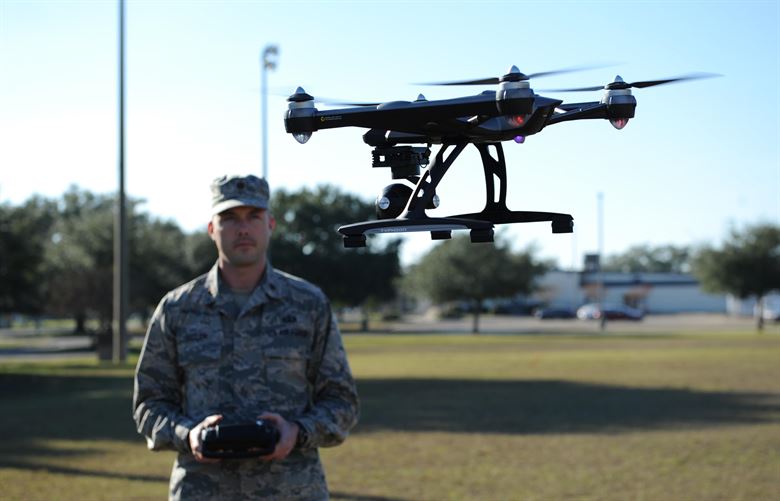This post is also available in:
 עברית (Hebrew)
עברית (Hebrew)
The U.S. Army has shifted its counter-drone effort from handheld weapons, designed to disable small, explosive-laden unmanned aerial systems, to larger, more sophisticated weapons, capable of defending bases from large-scale attack, the director of the Army’s Rapid Equipping Force said.
Since the REF began working on counter-UAS efforts in early 2016, the office has had some success fielding systems such as Battelle’s DroneDefender, which can be aimed like a rifle, and Radio Hill Technologies’ radar gun-like Dronebuster, to help units prevent commercial-style drones from attacking with homemade bombs.
These handheld systems are a “move in the right direction,” Col. Lanier Ward, the outgoing director of the REF, told military.com.
Ward added, though, that the technologies are designed to counter “smaller quadcopters and those type things – not for the larger-scale UASs you are seeing in the different areas of the world right now.”
DroneDefender came first. It’s a somewhat bulky system, weighing about 30 pounds. It has the capability to disrupt small “class-one” drones at distances out to several hundred meters, said Staff Sgt. Duryea Williams, who added that DroneDefender is mainly being used in static positions such as guard towers.
Dronebuster weighs less than 10 pounds and features a more streamlined design, making it ideal for turret gunners on a vehicle, Staff Sgt. Mark Walker Jr. said.
“The Dronebuster is able to go inside that turret and the gunner can use that on the go,” Walker said.
But these two systems are only the initial solution to addressing the counter-drone problem, Ward said.
“As soon as you say you have got it all wrapped up — you don’t, and that is why we stay in business because the threat is constantly changing,” he said.
The next phase in countering the drone threat falls to the Army’s Project Manager Counter Rocket, Artillery and Mortars, or PM CRAM, which has been given primary responsibility for the counter-UAS fight, in support of U.S. Central Command, Ward said.
“That team has a larger, more robust capability of going after the problem,” Ward said. “They were a lot more attuned to radar – how do I identify, how do I detect, how do I defeat? They were able to work that bigger package piece.”
The REF will continue to improve dismounted, counter-drone systems, but PM CRAM is more capable of handling what Ward calls a “defense in-depth” approach to drone defense.
“If you’ve got a control point, you got your front gate … you may be met by a guard and that guard is carrying a 9mm pistol. I sort of provide the 9mm for that individual defense, but if you end up having something larger, where if you have a truck-borne IED coming at you, you want something more capable,” Ward said.


























